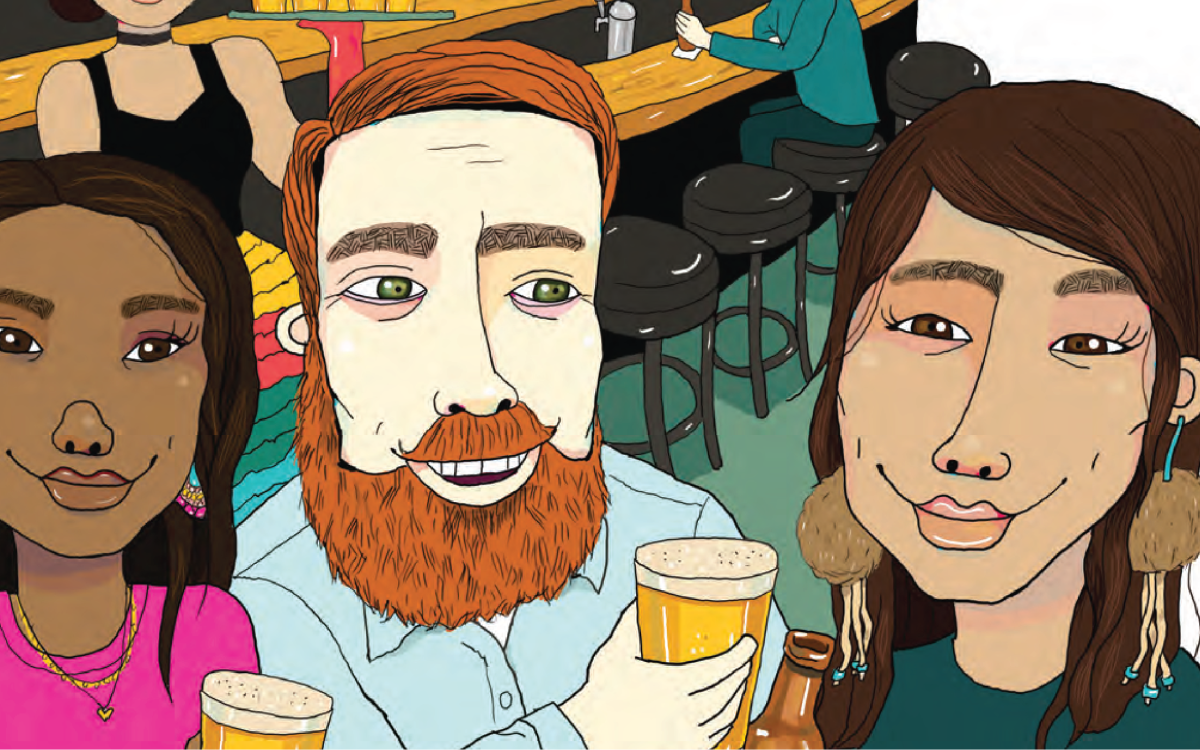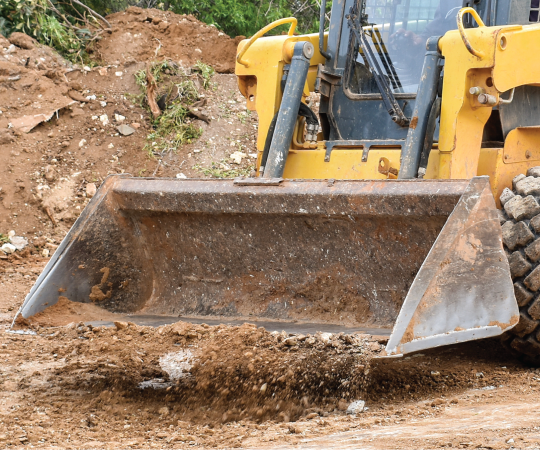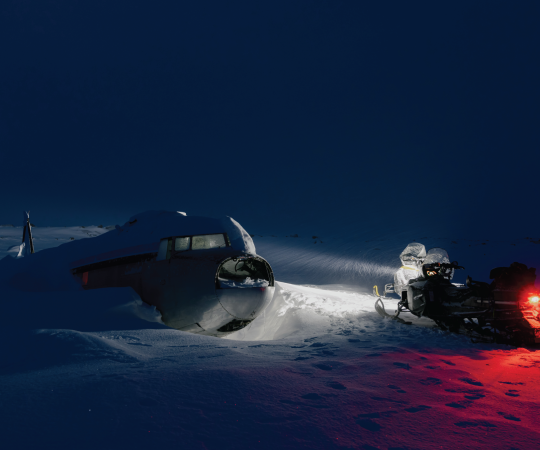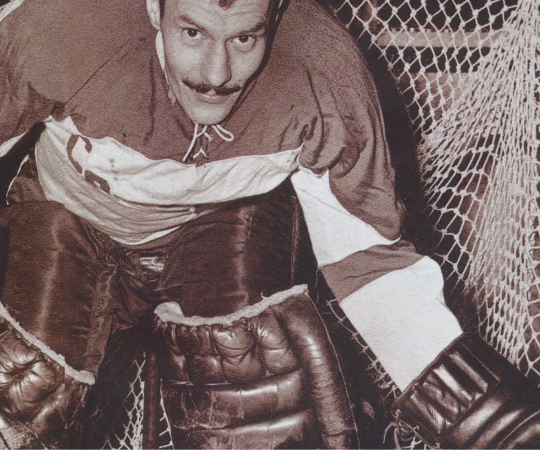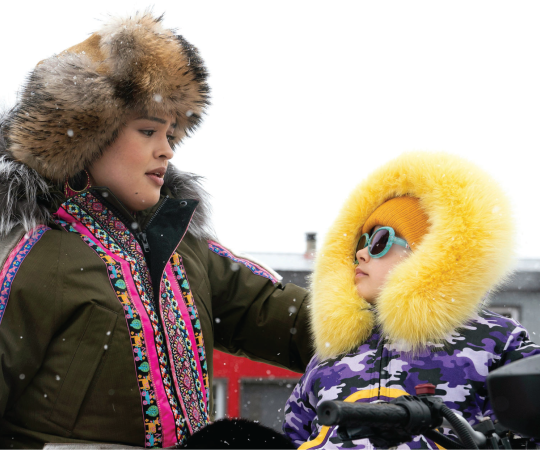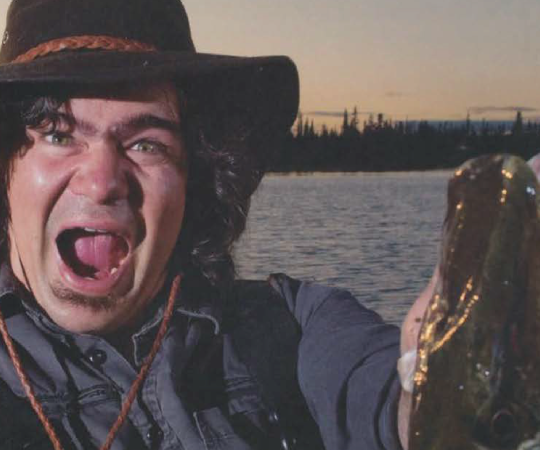I DRANK MY FIRST NORTHERN BEER IN 1993. I was visiting Skagway, Alaska, near the foot of the Chilkoot Trail, that May and the year’s first cruise ship was due in a couple of days. Everything in the famed Klondike Gold Rush town was open and prepping for the start of the manic tourist season. But, at this moment, the place was empty. My travelling companion and I wandered the boardwalk-lined streets and marvelled at the spectacular mountain scenery, undisturbed by throngs of other tourists.
The beer surfaced during lunch, when I noticed bottles of something called Alaskan Amber. The server told me they were from the Alaskan Brewing Company in Juneau, about 150 kilometres south along the coastline. I ordered one and it was sublime. Then I ordered another and reluctantly stopped short of a third.
Actually, I did sneak in a third, but it was just before we left at the end of the day. I sampled many more northern beers over the following years as the territories joined the global craft-brewing trend. I can confidently report beermakers in each territory offer creative and flavourful alternatives to the mass-market products of brewing conglomerates. But the same can be said of craft beers anywhere. Moreover, in a world of advanced supply chains and information available in an instant, you don’t need to be in a special place to drink a special beer. Ireland no longer has a monopoly on dark stouts that taste like Guinness, and you can get a crackling pilsner without travelling to the Czech Republic.
In other words, you can get anything anywhere, and it’s left me wondering, what makes a northern beer “northern”?
Bob Baxter, a co-founder of the Yukon Brewing Company, the first successful craft brewery in the North, offered a quick take when I first asked him my question: “Northern beer comes in cans.” At least, that was a distinguishing feature up until around 2000, when Yukon Brewing launched. The territory was one of the top jurisdictions in Canada for sales of beer in cans. You can pretty much assume the same was true in the NWT and Nunavut, given that, compared to bottles, it’s cheaper and more efficient to load pallets of cans on trucks and resupply ships.
When Baxter started out, he sold his beer in bottles. But his customers still wanted cans. He asked them why and heard many explanations. You can stack more cans in a refrigerator. Labels don’t soak off cans when the ice melts in the cooler, so no more beer roulette. Crushed cans are easier to pack out at the end of a wilderness trip. The most novel answer noted that cans hold 355 millilitres of beer and bottles have 341. Baxter can still quote the commenter’s summation. “Over my lifetime, that extra tablespoon will add up.”
That’s an intriguing perspective, for sure, but there must be more to a northern beer than its container. Looking back on brewing history, it’s tempting to see a theme in “hardship”—or at least something that signals the ability to find creative solutions quickly to sudden crises. This is true for any business in the North, where supply chains remain slender, expensive and vulnerable not only to the climate but also boom-and-bust economic cycles. Those who can’t adapt have slim chances at success, brewing included. The only difference is the flavour of the challenge.
Consider: The first beermaker in the territories was a Canadian entrepreneur named Thomas William O’Brien, who hightailed it to Dawson on news of the 1896 gold discovery at Bonanza Creek. An ambitious believer in the boomtown’s future, O’Brien invested in numerous ventures. In 1904, that included stepping up as the boss of, and largest shareholder in, the O’Brien Brewing and Malting Co., also known as Klondike Brewery. He promised beer that would “make the Pabst article taste like soda water without any soda in it,” and Dawsonites drank it up at first. Sales of imported beers tanked as O’Brien’s brew became available. But the city’s post-gold rush decline was entrenched, and the “sourdough’s favourite beverage” soon followed the imports down a steep slope. O’Brien Brewing lingered on the brink of failure for several years until Prohibition finally signed its death certificate in 1920.
Local brewing, as a business, would not return to the territories for more than 70 years. Over those decades, northerners satisfied themselves with beer shipped up from the south and sold in liquor stores or served in restaurants and bars.
Then, in 1993, a group of investors opened the Bush Pilot’s Brew Pub in Yellowknife, the first modern craft brewery North of 60. There was much to love. Located in the old Canadian Pacific Airlines floatplane base on Back Bay, the main room featured large windows looking out over the water. It also had the city’s only patio, which even attracted patrons determined to raise seriously frosted glasses in the first direct sunlight of the year.
But those features weren’t enough to overcome what the Bush Pilot’s got wrong. An airplane wing served as the bar—a good idea in theory—but you couldn’t rest a glass on the curved surface. The historic waterfront location was also far from where most Yellowknifers lived, discouraging longer sessions due to drinking and driving concerns.
The most damning detail was the beer. It wasn’t good. Yellowknifers held their noses, sometimes literally, and gave the business a lengthy chance to improve. But, ultimately, the Bush Pilot’s couldn’t adapt. After an ownership change and a relaunch as the Old Town Pub (without local beer), it closed in 1997.
The next wave of craft brewing, today’s brands and businesses, have fared much better and displayed nimble skills in the face of operating challenges familiar to any business that succeeds in a remote community. “I’m the general manager, but it’s very general,” says Jason Oldham of the Nunavut Brewing Company (aka NuBrew) in Iqaluit. You can say the same for any northern brewer. They are basically manufacturers and must deal with specialized equipment daily. But as Northerners, they don’t have local access to specialized repair services when something breaks down. So, they improvise. Oldham figured out how to disassemble a malt boiler to replace a motor and learned how to deal with logic controllers that had become illogical. Baxter chuckles about the time the brewery’s hydraulics system went down. Not knowing what to do, he called a nearby hoist rental company. Its staffers couldn’t fix the problem, but they helped him understand it so he could order parts and get the job done.
Beer-making also leaves behind a lot of spent grain, a gooey organic waste, and brewers have to figure out what to do with it. Yukon farmers happily take the local stuff for livestock feed, as happens in the south. Other brewers have to be more creative. The Alaskan Brewing Company, for example, famously installed a boiler system to burn its spent grain and make steam for the brewing process. Before that, it bore the cost of shipping the waste to the Lower 48.
NuBrew faced a similar problem. But the brewery’s neighbour was a company that remediated soil, mostly from old military sites and diesel spills at residential and commercial properties. Maybe it could use spent grain in its process? The company said, “Yes, please.” Problem solved. “It works well,” Oldham says. “It gets rid of our waste, and it reduces the amount of time it takes to do the remediation process.”
These experiences certainly make charismatic stories, but if you think about it, the operating environment and its challenges are part of a larger idea when it comes to beer: a sense of place. Northern beers express the idea of being made here. The grind to deliver the product is the unseen part. The evocative piece comes, in part, from developing flavours with local ingredients. That can be an important differentiator for beermakers in creating identities both for themselves and their region.
Scott Shailer, brewmaster at Woodcutter’s Blanket in Whitehorse, says you could argue that beer is, essentially, 94 per cent water. “Another five per cent is alcohol. I don’t know if this is exact or not, but the other one per cent is the ingredients that give you the flavour of a particular beer.” In the North, he continues, that one per cent may include locally foraged plants and berries such as cranberries, haskaps, spruce tips, rhubarb and crowberries.
Malting also offers opportunities, but it’s complicated. Shailer experiments with the process in the off-season using local grains for limited-run beers. “From that, we might get beers that actually taste of this area.” But he adds that doing more with malts would soon get in the way of making beer, which is what the business sells.
In fact, marketing may be the strongest factor in establishing a beer’s identity in relationship to place. It’s certainly the loudest and you can see it right away in the names of beers. Yellowknife’s NWT Brewing Company peppers its lineup with Bug Repellent, Honey Bucket Nut Brown, Bent Prop Pilsner and Ambrrr Ale. The menu at Winterlong Brewing Co. in Whitehorse includes Log Splitter, Sweater Weather and Pingo beers. All brewers, meanwhile, lean into northern landscapes and iconography for their visual identities.
But even the sum of all these factors—nimble businesses, localized recipes, northern imagery—may still miss something in defining a northern beer. The celebrated Cambridge University anthropologist Mary Douglas wrote that drinking alcohol is a group activity. People use it to create identities and determine who’s with the in crowd and who’s out. Northern brewers seem to agree. Baxter describes beer drinking as a kind of celebration, even if you’re only celebrating having helped move a friend’s couch. Shailer says a beer has three components: brewers, ingredients and enthusiasts.
But the best answer to “what makes a beer a northern beer?” came from a friend. He didn’t reply to the question directly. Instead, he told a story about how he and a group of buddies, for a bachelor party, hiked into a wilderness lake. They were greeted on arrival by a small floatplane bringing them pizza and beer. That was a northern beer.
To put that another way, a northern beer is the one you drink when you’re feeling a sense of connection to the place. The stronger the feeling, the stronger the connection. And the better the beer.

